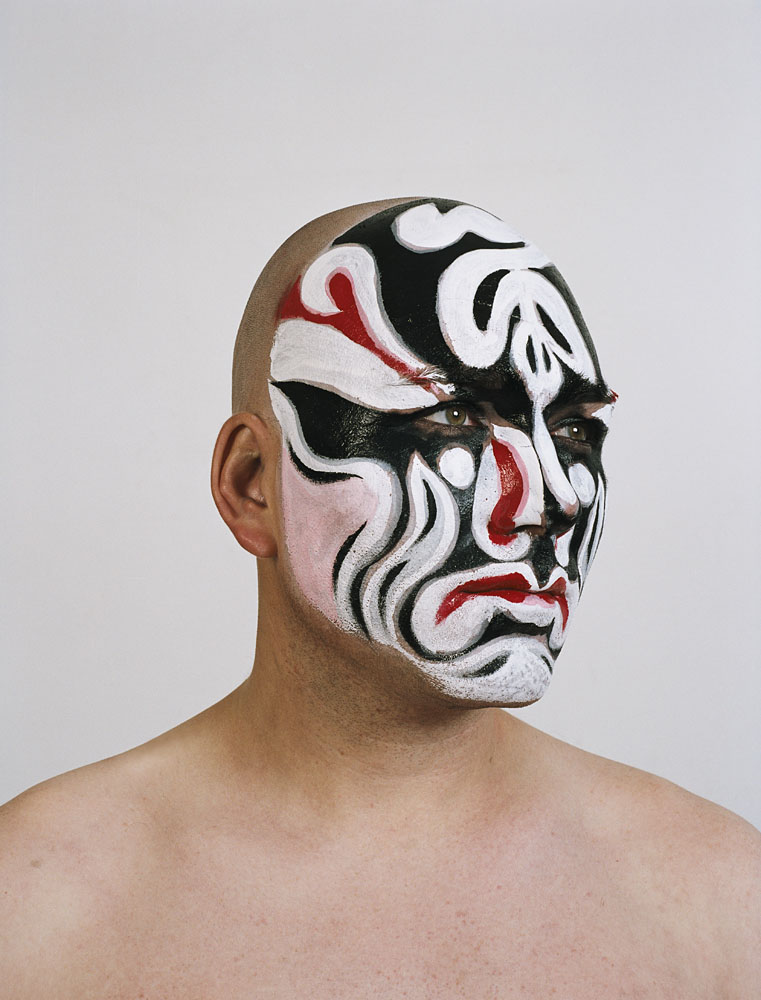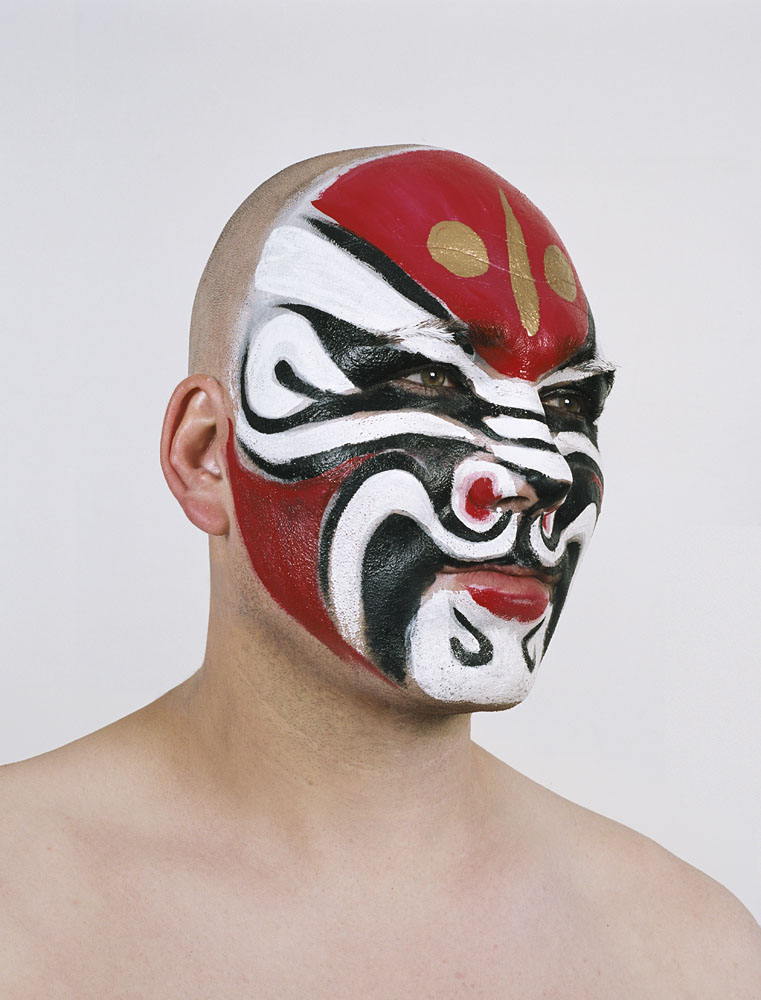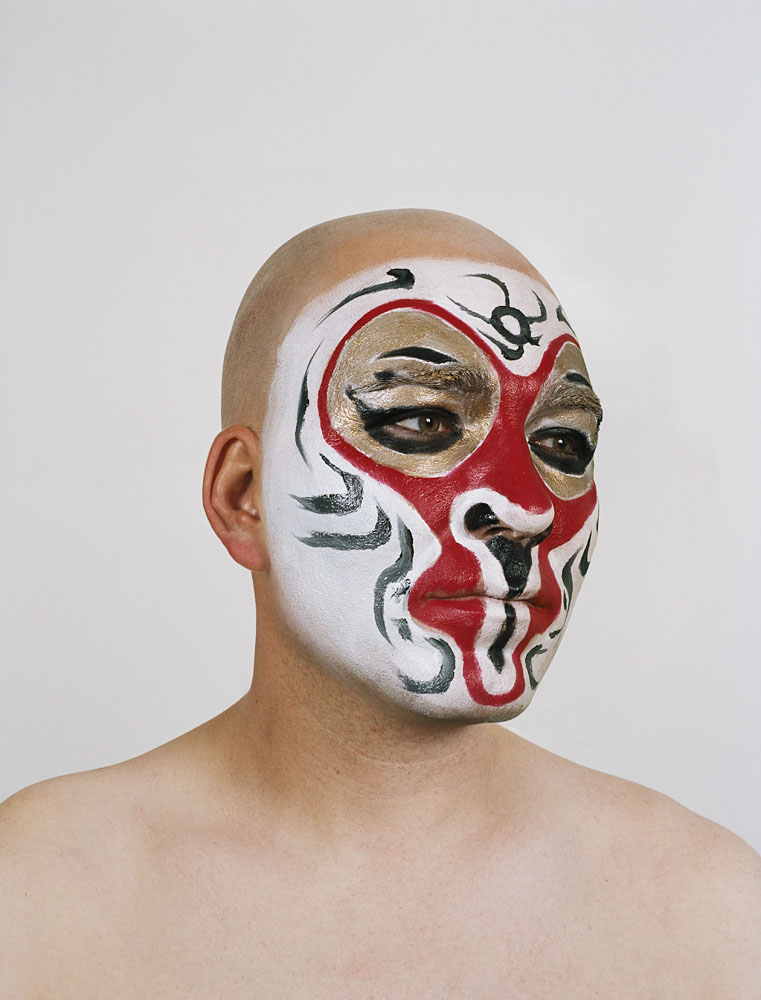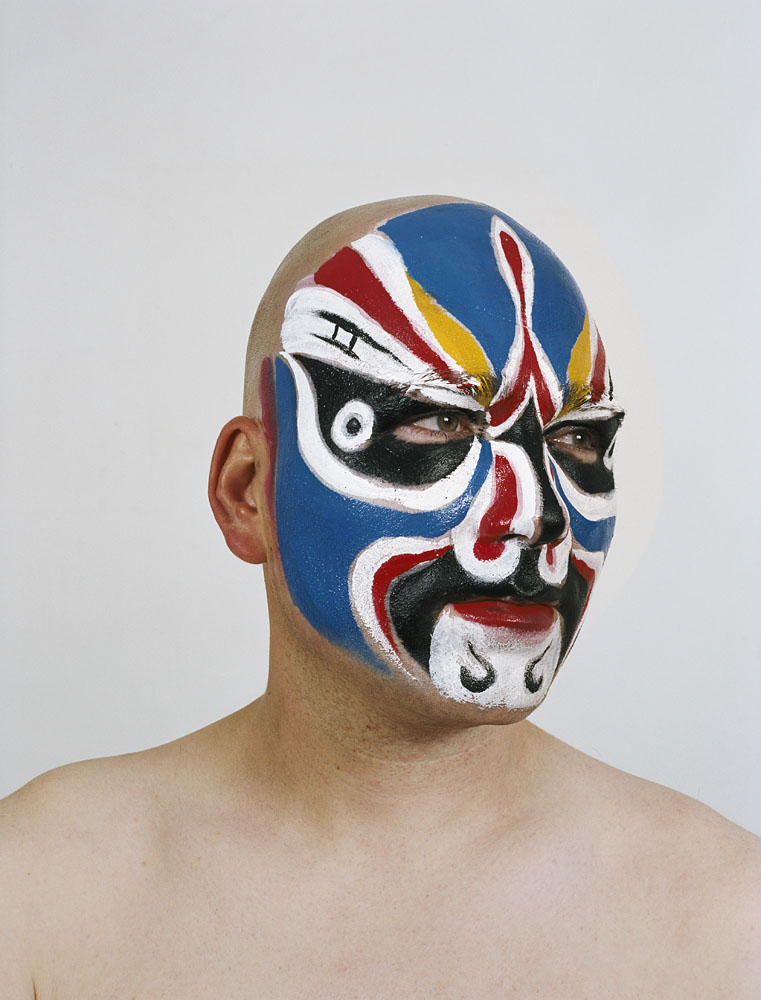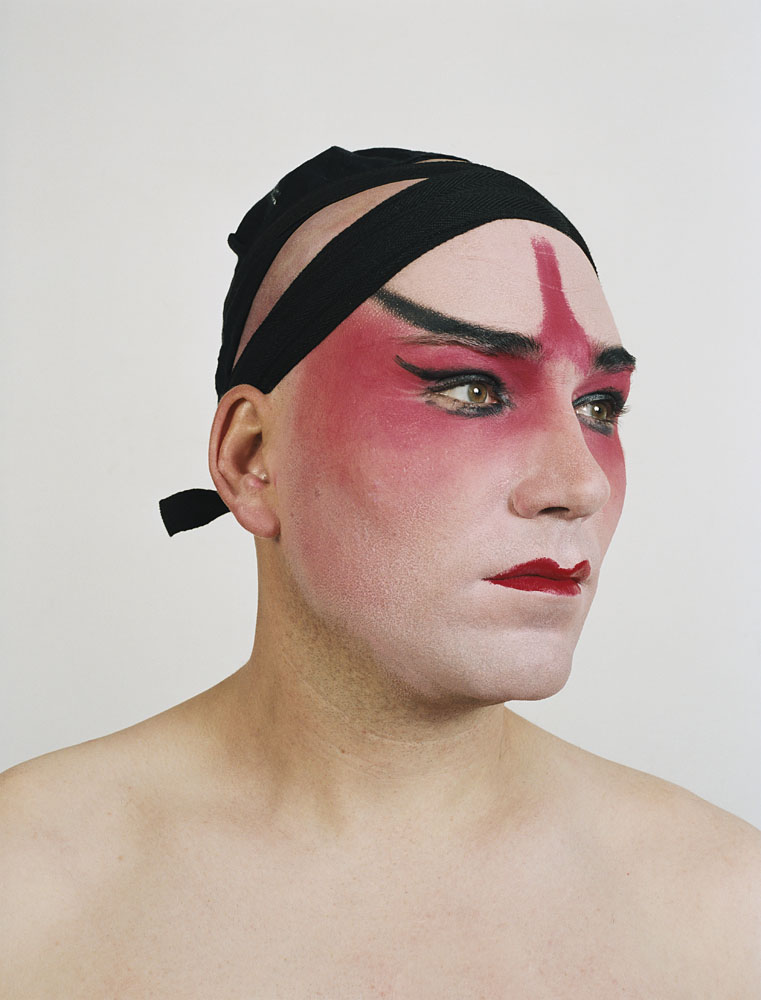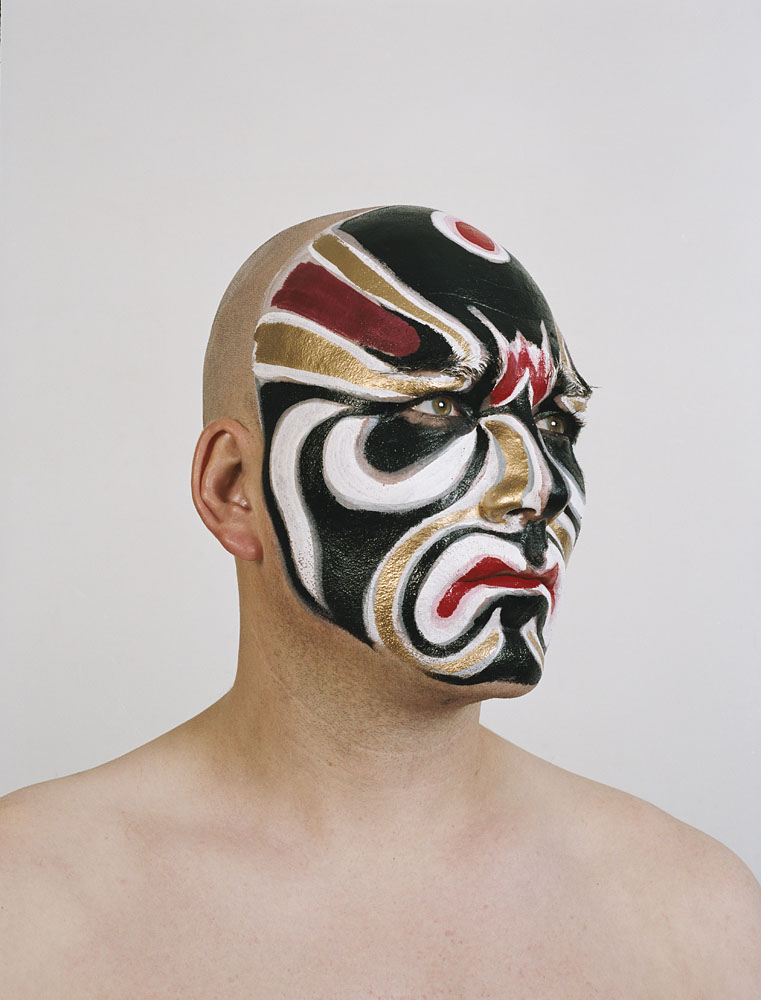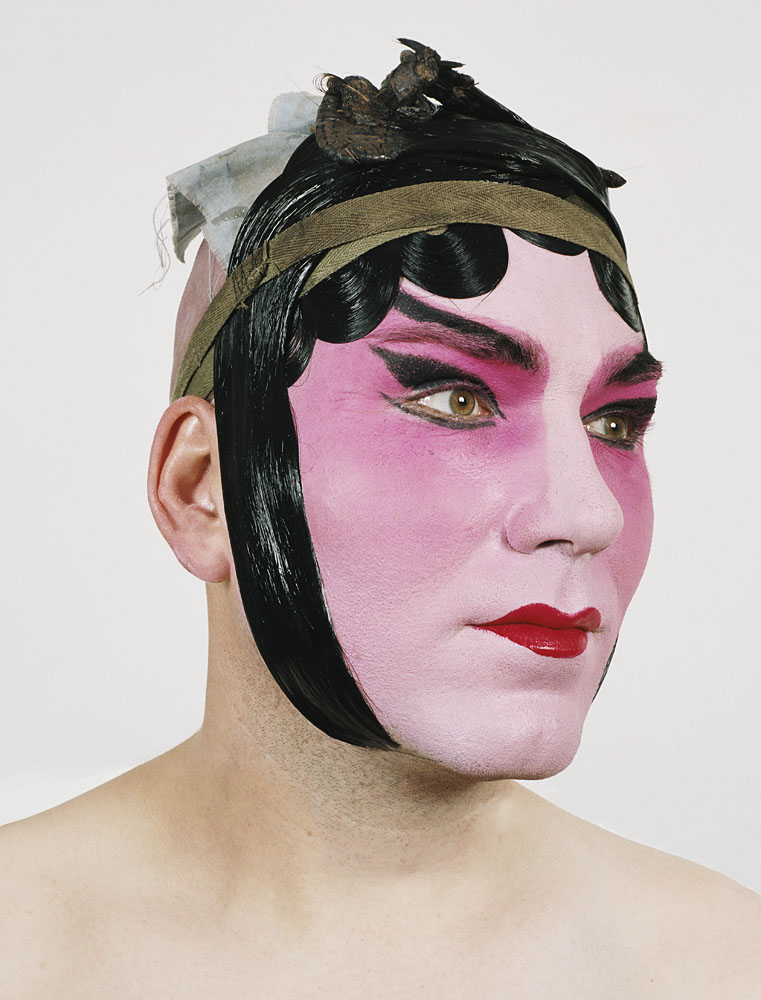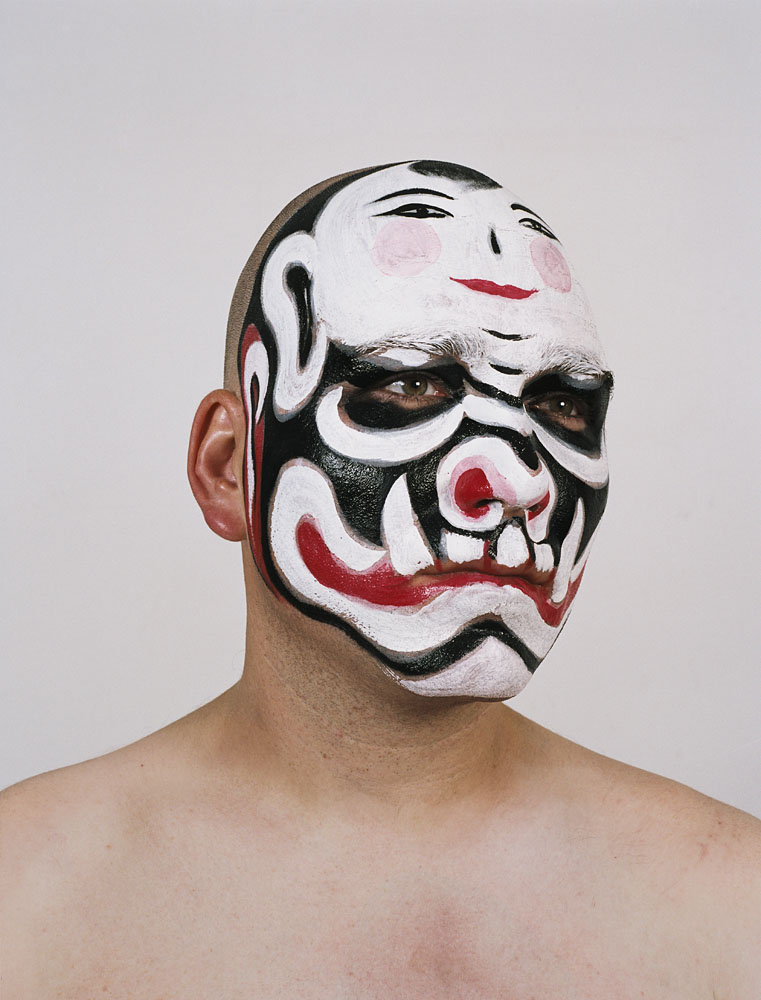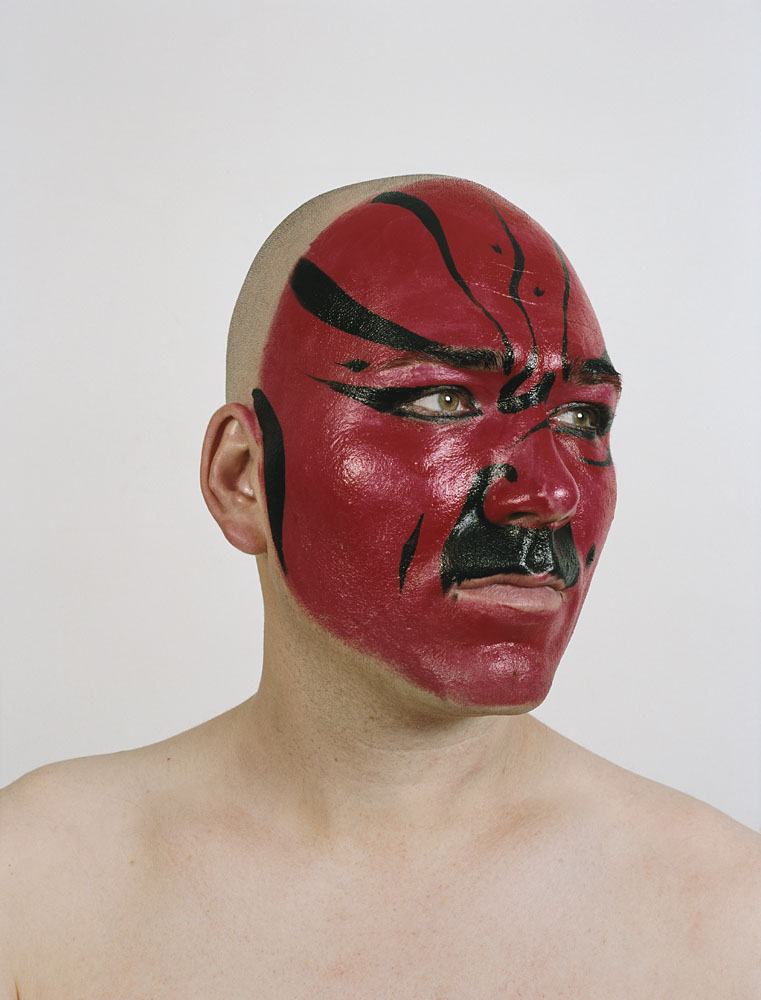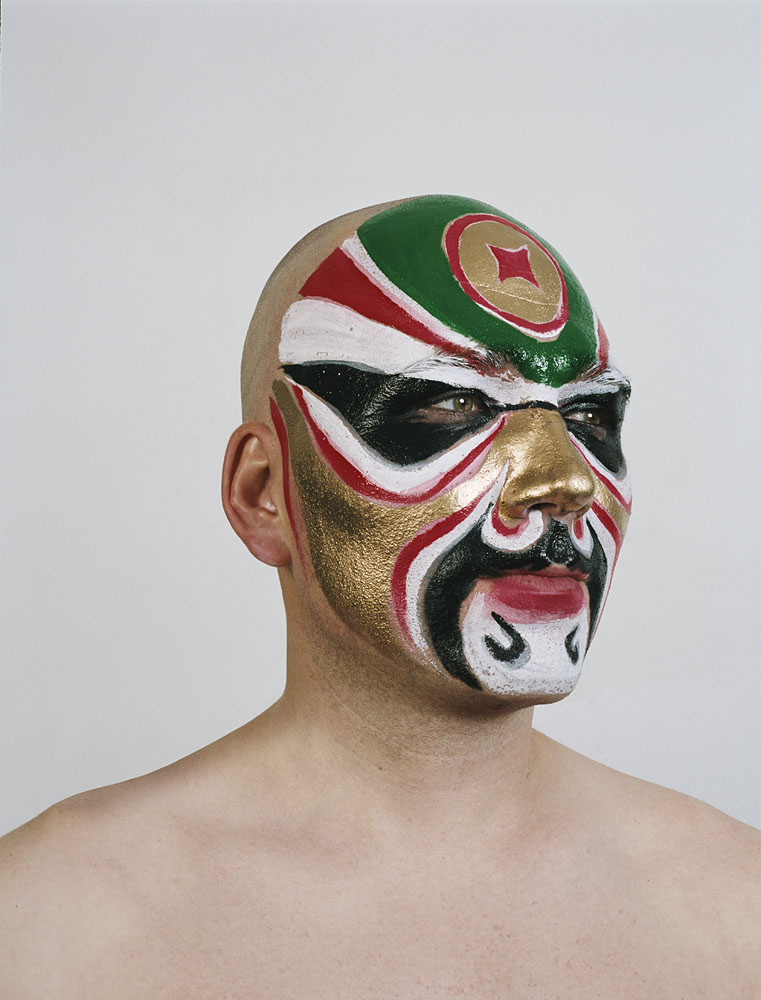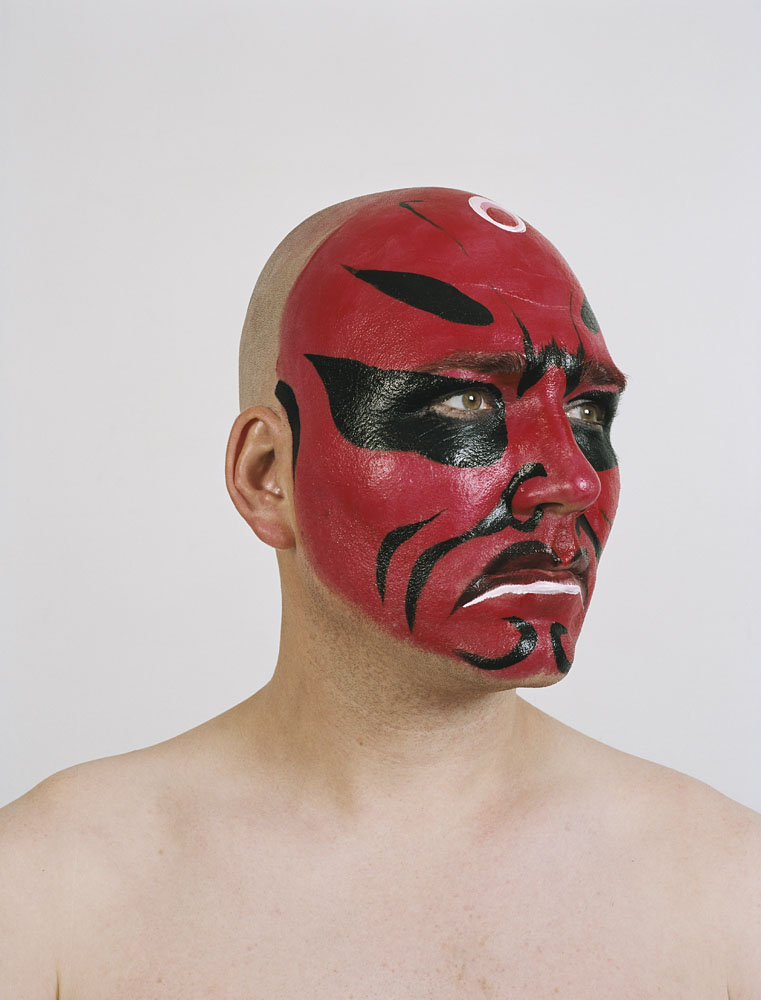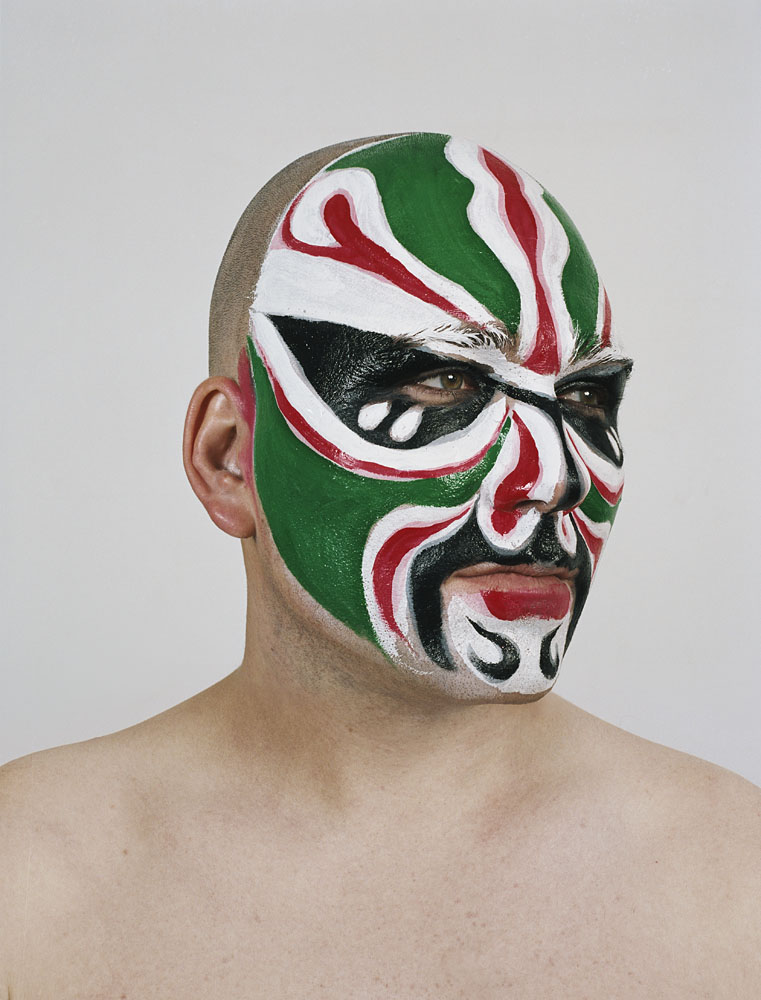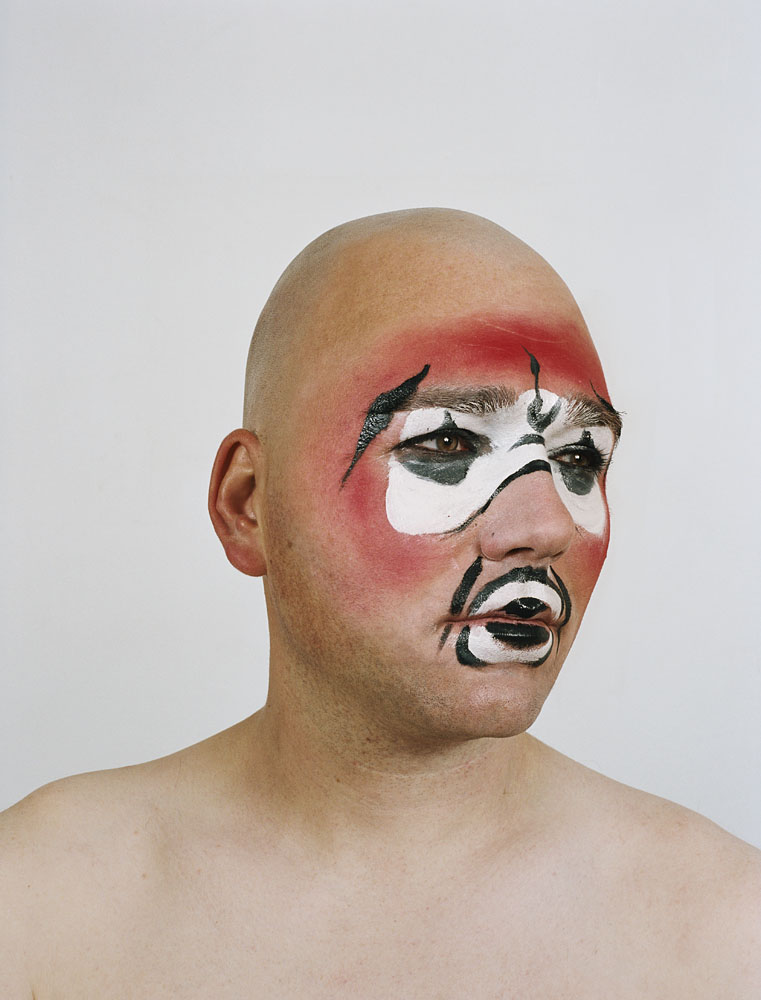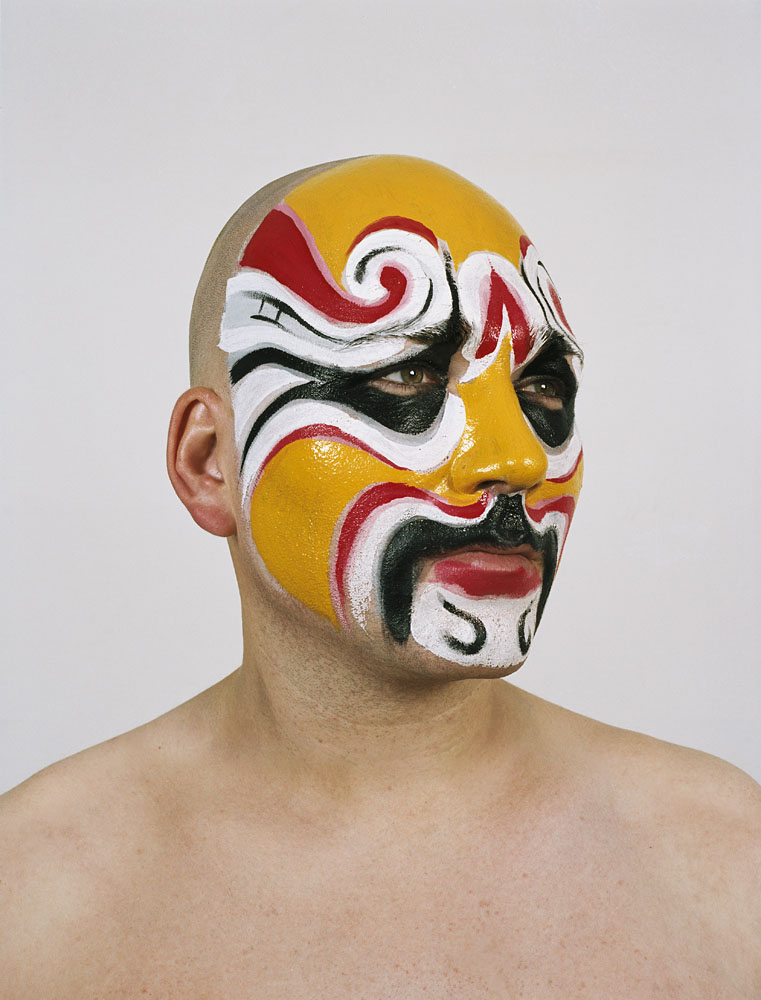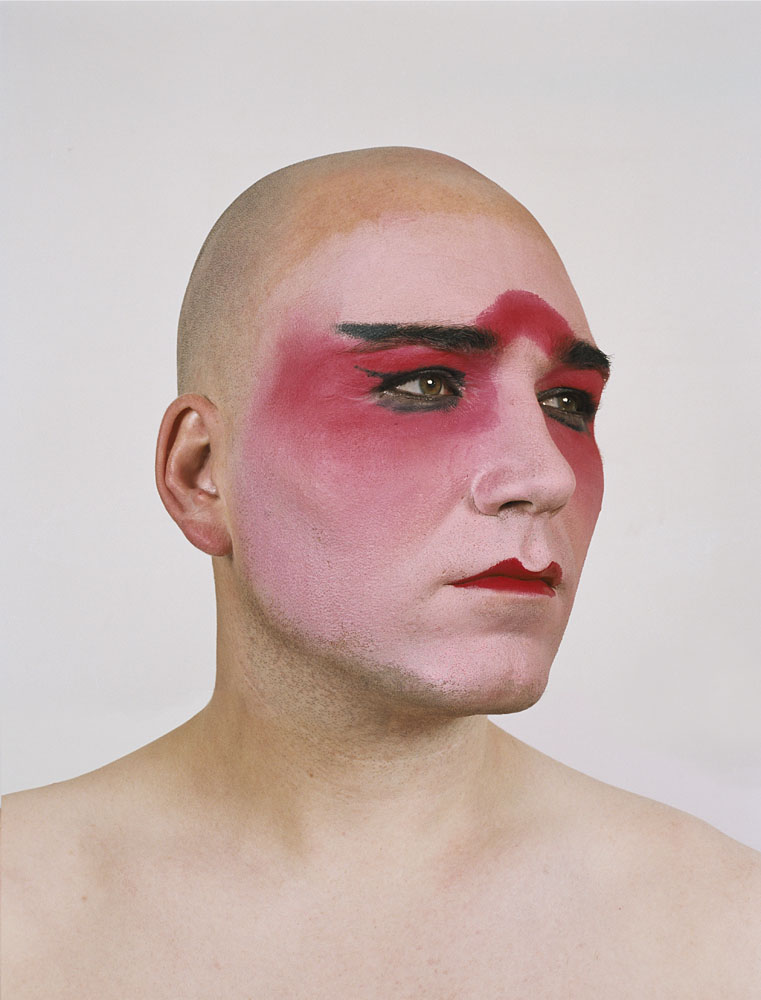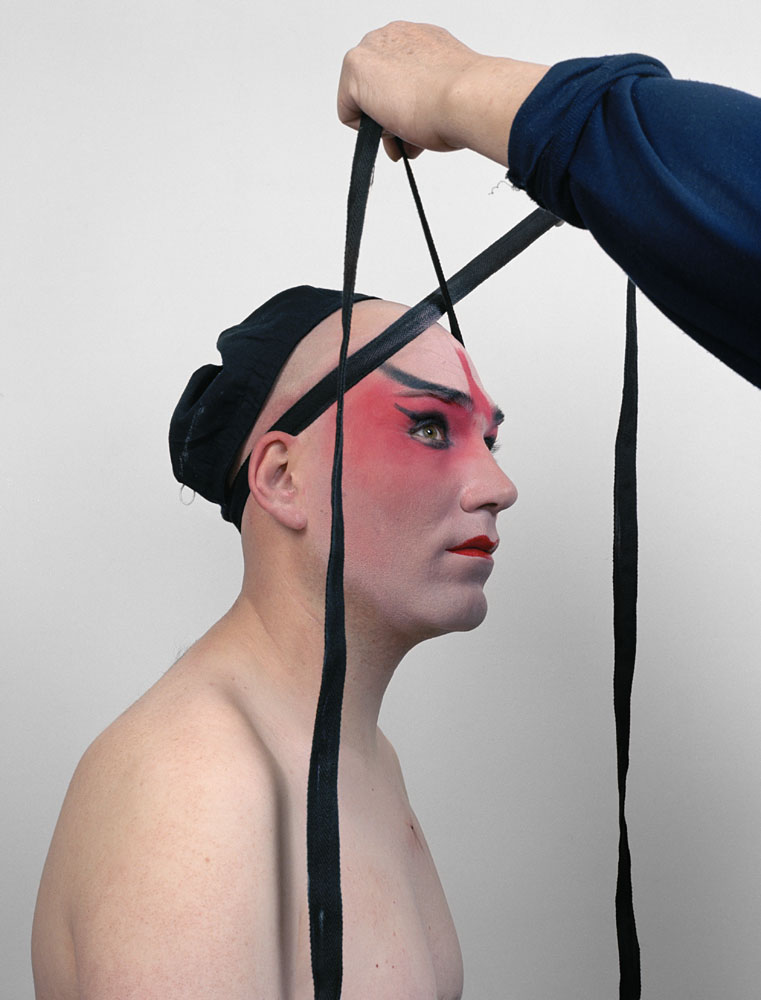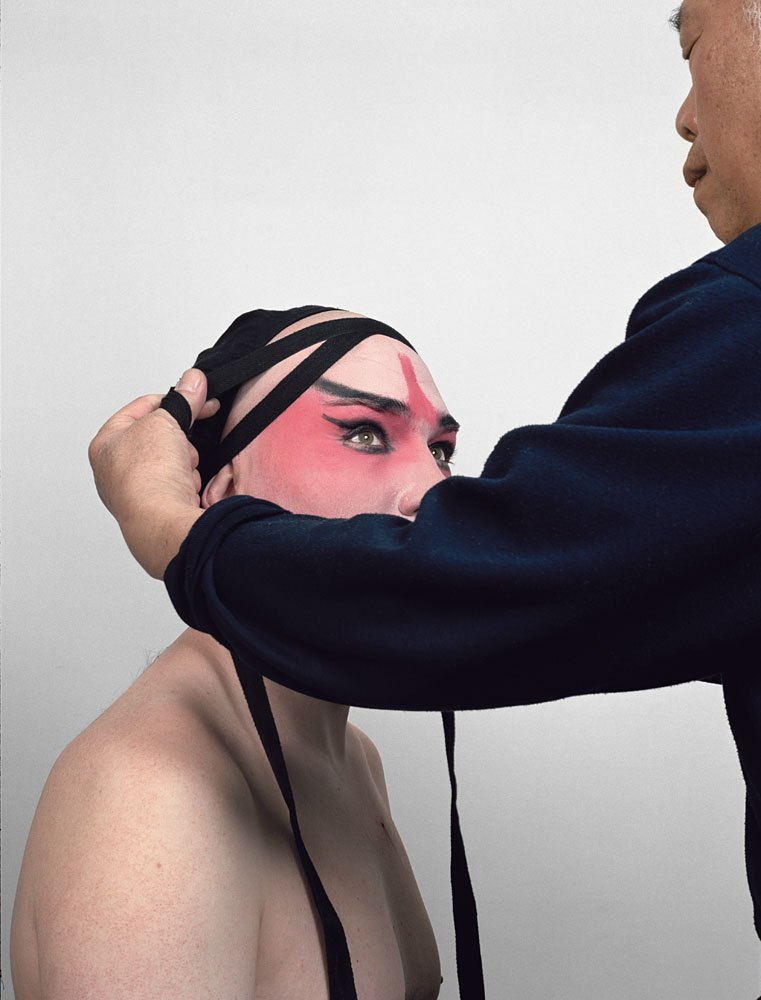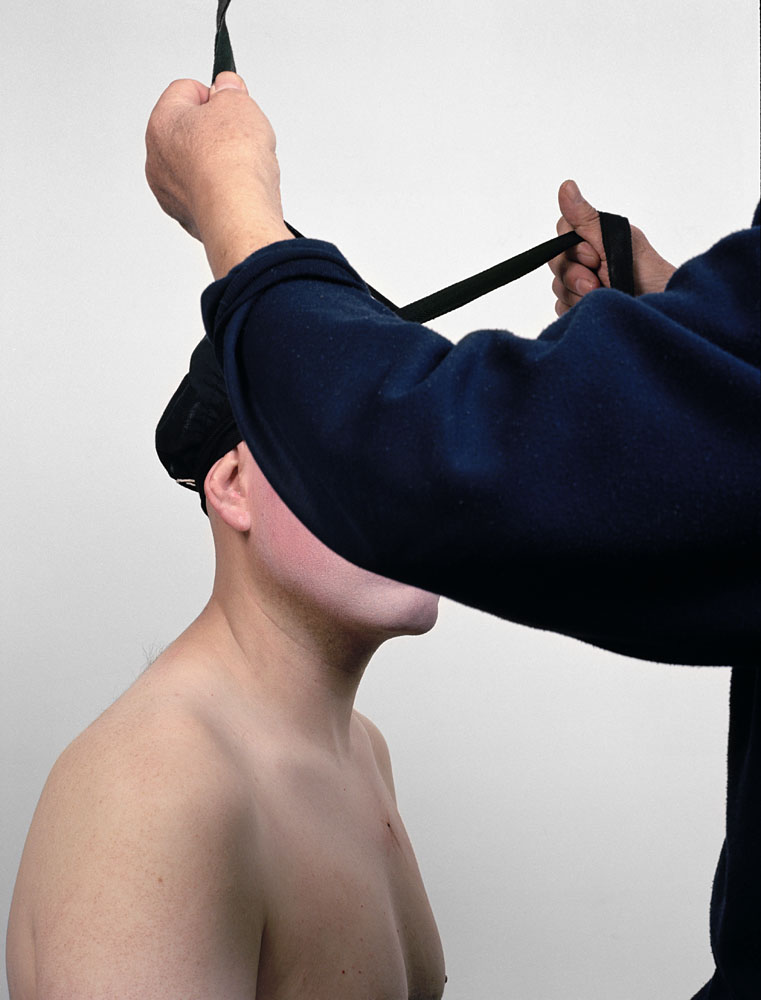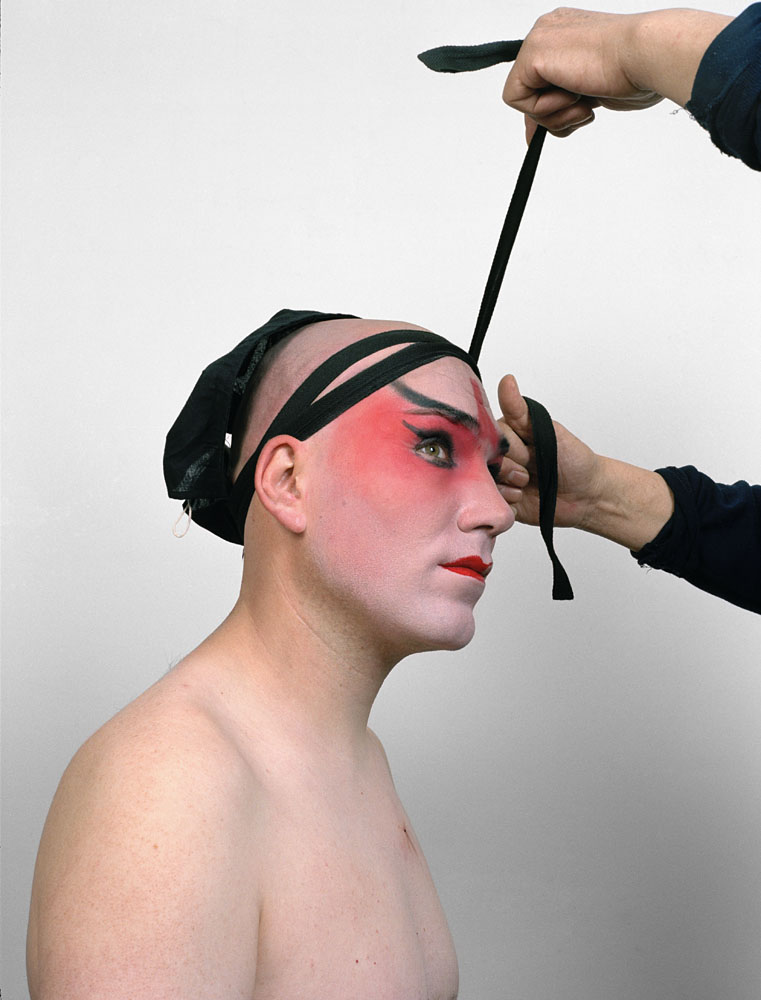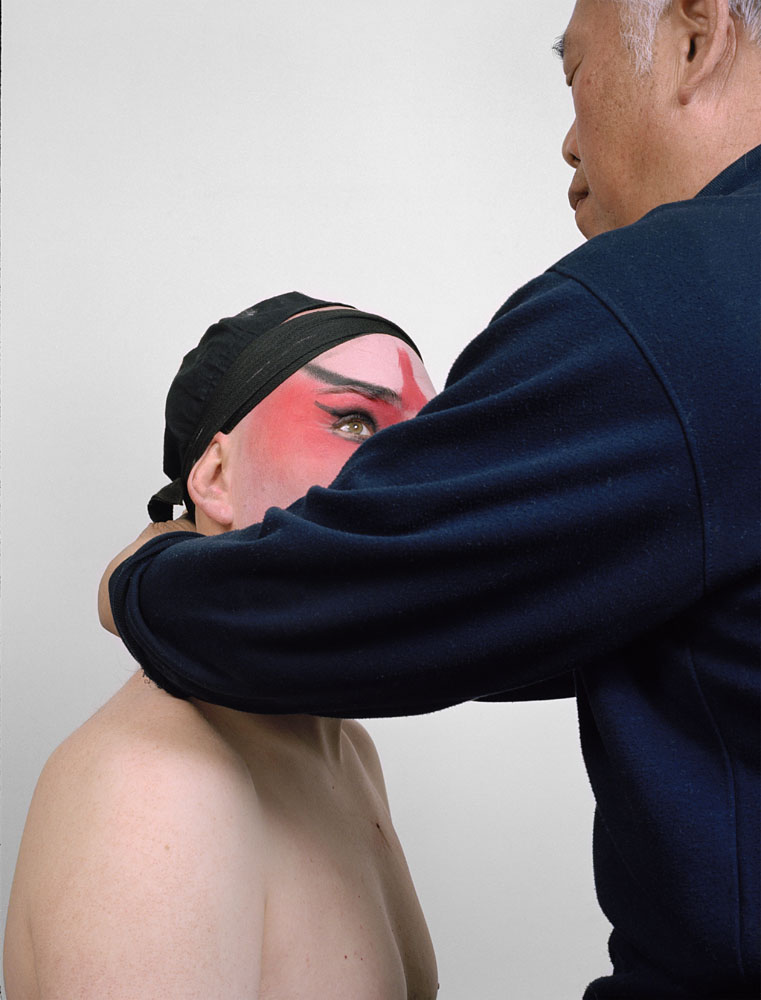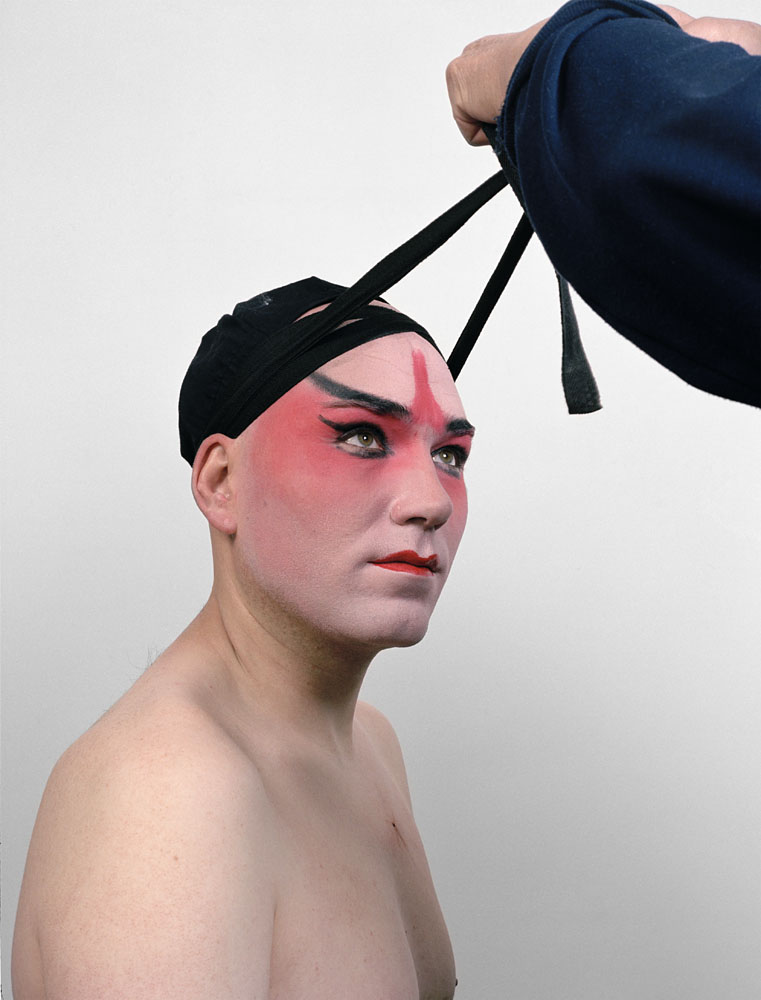After having his body and face painted by the Himba in Namibia, Charles Fréger decided to go back to Beijing, where in 2005 he had made the series Opéra. This time his idea was to cross over to the other side of the camera. Up until then, the codes and symbolism of the Beijing Opera had escaped him. What he had captured in his photos were the aesthetic qualities of the figures, their shape and their colours. On this second trip he worked with make-up artists and costumiers from the Opera. The object of their attentions this time was his own body. He had a compulsive desire to break down the distance between photographer and subject and to experience, through the process, the sensation of becoming another person – to create a fantasised version of himself. The Biyan series traces the gradual transformation of his face at the hands of the make-up artist from the Beijing Opera. This was the stage before having a costume made for the character he had invented for himself, General Lu Quan Ran, a part he played in a filmed performance. Charles Fréger had metamorphosed himself, as he said once again when he made the Fantasias series. In this journey towards Otherness, he had experienced the insoluble distance between self and other and the inextinguishable pleasure that comes from shuttling between the two. The other remained the other, and Charles Fréger took great delight both in making the journey and in his own movement.
This resistance was a yardstick for measuring his desire and for testing it, in the same way as he had experienced and brought to light the particularities of identity and the depth of its roots. The motive power behind the work lay in this tension and in the persistence of his urge to move towards the community and, ultimately, towards the world.
